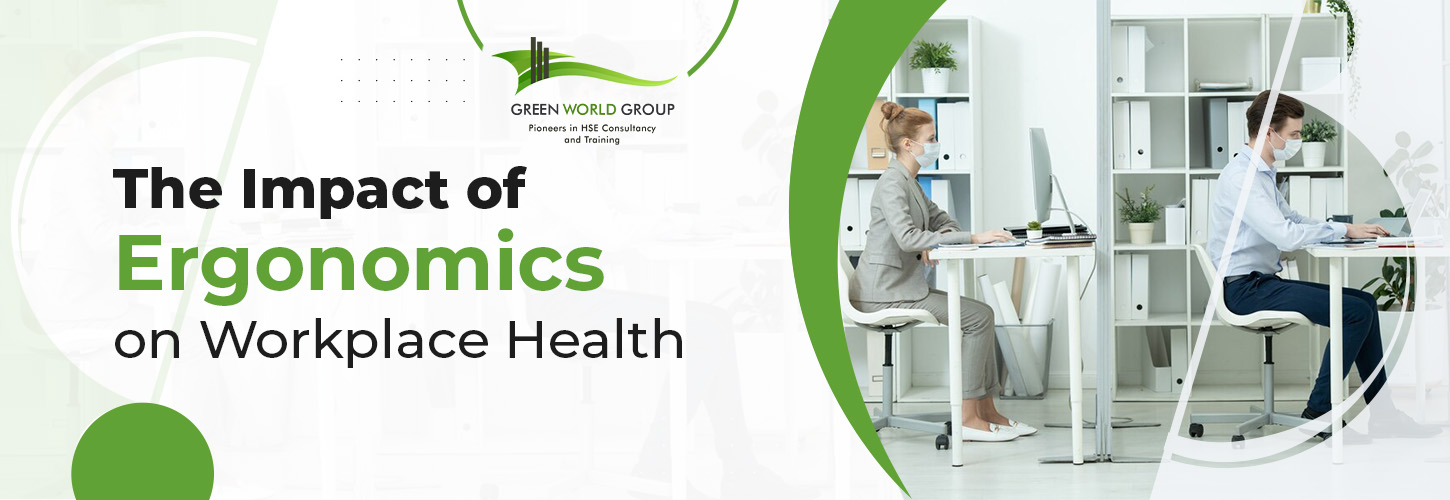Let’s understand about Ergonomics
Typically refers to a brief overview or summary of the ergonomic aspects of a particular situation, environment, or design. It captures key elements related to the efficiency, comfort, and well-being of individuals within that context, providing a quick insight into how ergonomic principles are applied or need to be considered.
A productive work environment is a safe work environment, where safety procedures, regardless of the type or size of a business, protect the staff, equipment, and business property. By avoiding damage to equipment and minimizing injuries, businesses can achieve more profit and incur fewer expenses.
Ergonomics is a common workplace safety concern, as a non-ergonomic environment may lead to various health issues, including carpal tunnel syndrome, sore back, tendonitis, and chronic cold and flu due to lowered immunity, resulting from inadequate or non-existent workplace ergonomic processes.
What Is Ergonomics?
Ergonomics is the scientific discipline that studies the interaction between humans and their work
environment, aiming to design and arrange systems, products, and tasks to optimize human wellbeing, safety, and performance.
Conducting an ergonomic risk assessment will help organizations understand and review the work systems and designs present in their workspace, as well as to understand if they’re complying with the current legislation in this area.
Fast Fact about Ergonomics
- Ergonomics is the study of people’s interactions with their environment.
- It can help improve productivity, safety, and comfort in the workplace.
- Ergonomic interventions are cost-effective and have a quick return on investment.
- There is a growing demand for ergonomic knowledge and services.
- Ergonomics will continue to play a crucial role.
The Necessity of Ergonomics in the Workplace
Staff across many industries and occupations are exposed to various health risk factors in the workplace. These factors include issues such as:
Reaching overhead
Lifting heavy items
- Pushing and pulling heavy objects
- Bending
- Wrong body postures
Improperly performed activities can adversely affect the nervous and muscular systems, leading to Musculoskeletal Disorders (MSDs). Work-related MSDs are commonly reported causes of work loss and absenteeism. However, the implementation of ergonomics in the workplace can help prevent conditions such as rotator cuff injuries, tendinitis, muscle strains, and back injuries.
Employer Responsibilities
Employers need to do everything to set the right working conditions for their staff and to ensure their safety. The work environment should pose no serious harm to their safety, health, and welfare. To implement a workplace ergonomics process, employers must:
Create and maintain a safe workplace. The objectives and goals of the organization’s ergonomic process must be clearly stated, and management must assign responsibilities to staff members.
- When conducting an ergonomic risk assessment and developing processes, the staff’s input must be taken into consideration.
- Train the staff, so they understand the importance of applied ergonomics processes at work and are aware of the benefits.
- Appoint a competent staff member as the organization’s Safety Officer or Representative to conduct periodic checklist evaluations of the applied ergonomic process for its continuous improvement and long-term success.
- Encourage staff members to report early symptoms of MSD to reduce, control, and eliminate these health problems.
Benefits of Ergonomics in the workplace
- Improved Health and Safety: Ergonomic design aims to reduce the risk of musculoskeletal disorders, such as back pain, carpal tunnel syndrome, and eye strain, by creating workspaces that support proper body mechanics and minimize physical stress.
- Increased Productivity: Ergonomically designed workspaces and tools can enhance efficiency and productivity, as employees are less likely to experience fatigue and discomfort, enabling them to maintain focus and perform tasks more effectively.
- Enhanced Comfort: Comfortable work environments lead to higher job satisfaction. Adjustable chairs, proper lighting, and well-designed workstations contribute to a more pleasant and comfortable atmosphere, fostering a positive attitude among employees.
- Reduced Absenteeism: By minimizing the risk of work-related injuries and health issues, ergonomic practices can help reduce absenteeism. Healthier and more comfortable workspaces contribute to overall employee well-being.
- Increased Employee Engagement: Providing ergonomic solutions demonstrates an employer’s commitment to the well-being of their employees. This can result in increased engagement and a positive company culture.
- Adaptability and Flexibility: Ergonomics encourages the design of flexible workspaces that can adapt to the needs of different individuals and tasks. Adjustable furniture and equipment accommodate diverse work styles and preferences.
- Cost Savings: While initial investments may be required to implement ergonomic measures, the long-term benefits often outweigh the costs. Reduced healthcare expenses, increased productivity, and lower turnover rates contribute to overall cost savings for the organization.
- Compliance with Regulations: Many jurisdictions have regulations and standards related to workplace ergonomics. Adhering to these guidelines not only ensures legal compliance but also contributes to a safer and healthier work environment.
- Positive Impact on Mental Health: Ergonomics is not only about physical well-being but also has a positive impact on mental health. Comfortable and supportive workspaces can reduce stress and contribute to a more positive work experience.
- Employee Retention: A workplace that prioritizes employee well-being is likely to attract and retain top talent. Employees are more likely to stay with an organization that values their health and provides a supportive work environment.
Unleashing Productivity Potential
Ergonomics is an enabler, offering a comfortable work environment that minimizes distractions and discomfort. Imagine an employee not constantly shifting in their seat due to discomfort or straining their eyes to read small text. With ergonomic office furniture and setups, employees can focus their energy on tasks rather than battling discomfort, leading to increased efficiency and output.
Ergonomics in Office Furniture
It refers to the design and arrangement of furniture and equipment in a way that optimizes comfort, efficiency, and well-being for individuals in a workspace. This includes considerations for proper body posture, natural movements, and minimizing physical stress to enhance overall productivity and reduce the risk of musculoskeletal issues.
Embracing Ergonomics in Technology
In today’s digital age, where technology plays an integral role in office life, embracing ergonomics involves designing and utilizing technological devices and interfaces with a primary focus on optimizing user comfort, efficiency, and overall well-being. The goal is to reduce physical strain, enhance the user experience, and minimize the risk of musculoskeletal problems associated with prolonged use of technology.
The Bottom Line
Prioritizing employee health and productivity in the dynamic world of modern work is not just a trend but also essential. Ergonomics, with its emphasis on customized design, provides a solution that addresses both of these crucial issues. The benefits of ergonomic office design are apparent, ranging from lowering the risk of health problems to increasing overall productivity.
To achieve good ergonomics at the workplace
Organizations across many industries have successfully implemented ergonomic solutions. It is a call or intention to implement practices and designs that prioritize ergonomic considerations in the work environment. It emphasizes creating a setup that promotes comfort, efficiency, and overall well-being for individuals in the workplace to enhance productivity and reduce the risk of health issues associated with work-related activities.
By eliminating unnecessary movements and reducing physical demands, companies can lower their injury rates and compensation costs as well as reduce employee turnover.
Contact Us
Kindly call our Experts @ +91 8121563728 / +91 8015527650 or mail us @ kalyan.r@greenworldsafety.com / indumanasa.m@greenwgroup.com
Get Your Query Answered / Get Expert Assistance To Choose the Right Course for You Or Your Associates






